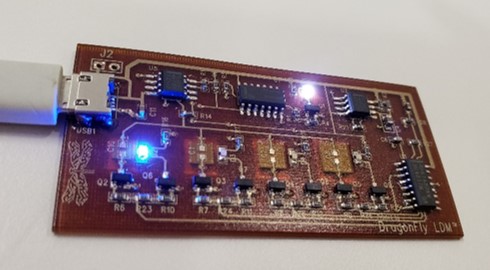Nano Dimension Ltd has developed 3D printed capacitors using its DragonFly additive manufacturing system. The new development comes with a new range of benefits: in addition to validate the manufacturing applicability of built in capacitors in PCBs, 3D printed capacitors save space and eliminate the need for assembly.
The capacitors are integrated in the body of PCB, that have also been fabricated using the company’s electronics 3D Printer. Moreover, with additional space, designers may pack more functionality on the circuit board and shrink component size – all without compromising reliability.
Let’s make it simpler for those who do not have an electronic background: “a capacitor can store electric energy when it is connected to its charging circuit. And when it is disconnected from its charging circuit, it can dissipate that stored energy, so it can be used like a temporary battery.”
Experts have already been able to use capacitors on the edge of PCB before, but production techniques were not the same. The additive electronics provider aims to demonstrate the repeatability of its system in short run manufacturing of capacitors using 3D printing.
So, how this production is different from conventional techniques?
The company explains that in a traditional manufacturing process, such fabrication is a multi-assembly process which is in the end time-consuming.
According to testing with capacitors of different 3D dimensions, results are consistent and data can be statistically validated. Furthermore, the technology uses the same dielectric and metal traces as in the additively manufactured PCB yielding capacitors with a capacitance range from 0.1nF to 3.2nF. The successful results are based on over 260 tests with 30 different additively manufactured capacitors dimensions.
Capacitors of this kind are primarily used to filter electrical noise and ripple voltage for a wide range of applications, including RF transmission lines, audio processing, radio reception and power circuit conditioning.
Amit Dror, CEO of Nano Dimension states: “along with high accuracy, miniaturization and space saving on the board, these are key factors in the electronics production process and next generation electronics applications.”
You can now post free of charge job opportunities in the AM Industry on 3D ADEPT Media.
For further information about 3D Printing, follow us on our social networks and subscribe to our newsletter!
Would you like to be featured in the next issue of our digital magazine? Send us an email at contact@3dadept.com






